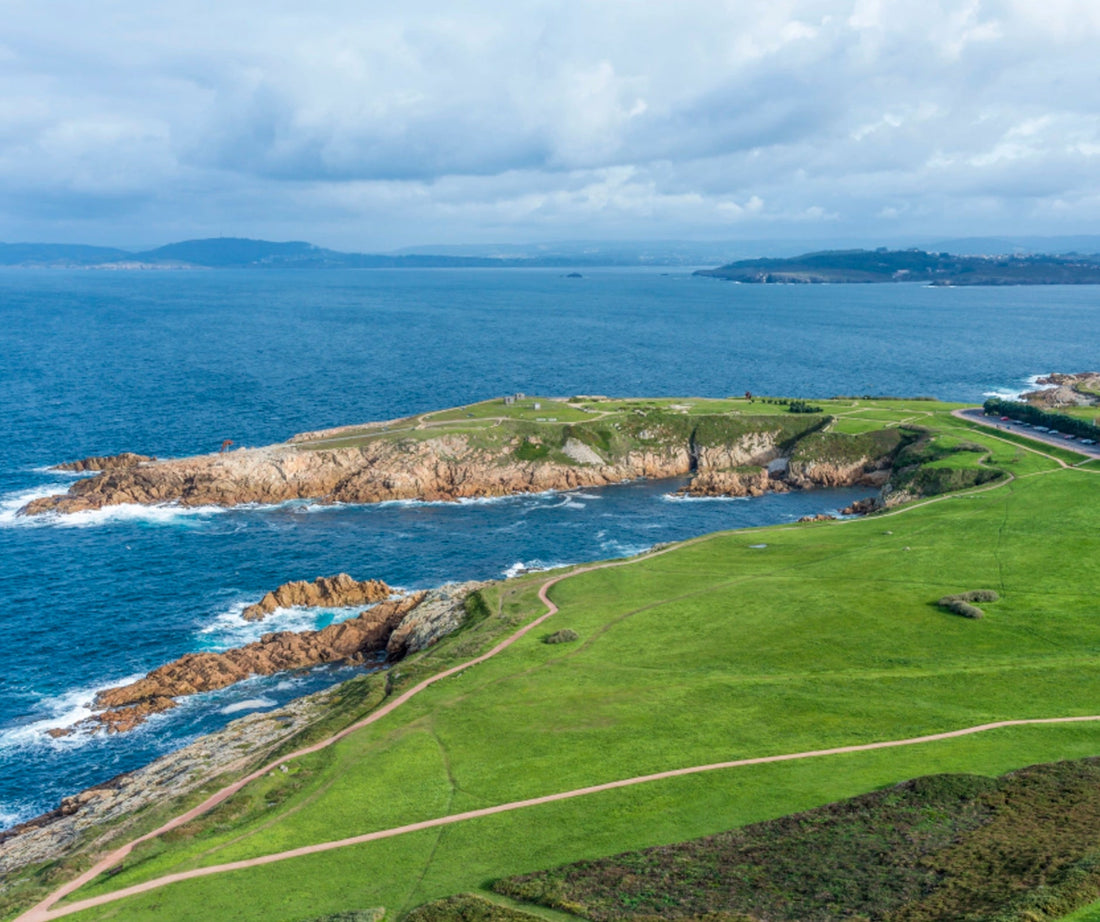Rias Baixas - Galicia in Northwest Spain
Mike MortensenRías Baixas is one of the most renowned wine regions in Galicia, located in the northwestern part of Spain. The region is particularly famous for its production of Albariño wine, a white grape that thrives in the mild Atlantic climate and unique soil conditions that characterize the area. The wines of Rías Baixas have achieved great international recognition, and the region is an important center of wine production in Spain, especially known for its fresh, aromatic and elegant wines.
climate and geography
The Rías Baixas is characterized by a temperate Atlantic climate, with mild winters and cool summers. This climatic influence, combined with high humidity and rainfall, creates ideal growing conditions for the grapes, especially Albariño, which requires a long growing season and a stable balance between heat and humidity. The many fjords, for which the area is named, also create microclimates that protect the vineyards from extreme temperatures and allow the grapes to ripen longer.
Geographically, Rías Baixas is divided into five sub-regions: O Salnés, Val do Ulla, Condado do Tea, Ribeira do Ulla and Soutomaior. Each of these sub-regions has its own specific climatic and soil conditions, which allow for the production of different styles of Albariño and other grape varieties.
The Albariño grape
Albariño is the primary grape variety in Rías Baixas and accounts for the vast majority of wine production. This grape is known for its fresh acidity, high aromatic intensity and complexity. Albariño wines often have notes of citrus fruits such as lime and grapefruit, as well as floral aromas and undertones of stone fruits such as peach and apricot. The best Albariño wines from Rías Baixas combine these fruity characteristics with a minerality that comes from the granite and shale-rich soil conditions.
Albariño wines from Rías Baixas are also known for their lively acidity, making them excellent as an aperitif or in combination with seafood, for which the area is also famous. The acidity gives the wine a freshness that is perfect to match the salty and umami-like notes of shellfish such as squid, mussels and oysters, which are local specialties in Galicia.
Other Grapes and Wine Styles
Although Albariño is the most prominent grape variety in Rías Baixas, other white grapes are also grown, such as Treixadura, Loureira and Godello, which contribute to the variety of wine production. These grapes are often blended with Albariño to create more complex and full-bodied wines. There is also experimentation with red wines, although they are not as widespread as the white wines.
There are two primary styles of Albariño wines in Rías Baixas:
1. **Fresh and Young Albariño Wines**: These wines are designed to showcase the fruity and aromatic character of the grape variety. They are typically not aged in oak and are best drunk young to retain their fresh acidity and fruitiness.
2. **Barrel-aged Albariño**: In some cases, Albariño wines are aged in oak barrels (often French or American), which adds extra complexity and structure. These wines develop a richer texture, undertones of vanilla and toast, and a more ripe fruit profile that can balance the wine's natural acidity.
Winemaking and Tradition
In Rías Baixas, winemaking is traditionally artisanal, although modern technologies have also been implemented to ensure quality and consistency. After harvest, the grapes are quickly transported to the vineyards to prevent oxidation and preserve their aromatic properties. Fermentation typically takes place in stainless steel tanks at low temperatures to promote the fruity and floral notes of the wine. Some wineries also use concrete or oak tanks to add extra complexity.
The vineyards in Rías Baixas are often small and family-run, and the winemakers place great emphasis on sustainability and respect for the natural environment. Many of the best producers work with organic and biodynamic methods, which reflect the deep respect that exists for nature and the land.
Economic and Tourist Importance
Wine production is an important part of the Rías Baixas economy, and the area attracts many wine lovers and tourists who come to explore the vineyards and enjoy the local wines. The region is home to several wine routes where visitors can taste the wines, learn about winemaking and experience the spectacular scenery. Albariño wines have become an icon of Galician wine production and are one of the most exported products from the area.
The Rías Baixas wine industry has also received the prestigious DO (Denominación de Origen) status, which provides formal recognition of the quality and origin of the wine. This designation has helped to increase the area's recognition on the world market.

